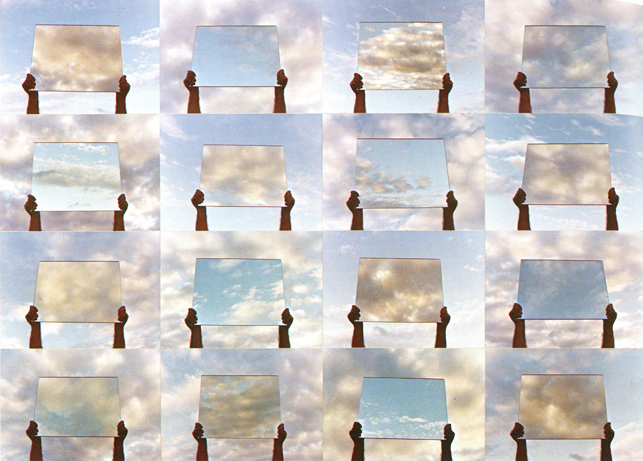Gary Beydler, 20 Minutes in April
As a device, the mirror beckons a panoply of critical formulations. A mirror can be seen as the symbol of vanity (the Narcissus myth), the site of the ego’s formation (Jacques Lacan’s mirror stage), or the mind of the perfect man (Chuang Tzu), to name just a few famous metaphors. But none of these feels particularly pertinent to the experience of Beydler’s mirror pieces, in which the mirror is never used to show the physical means of production (the camera itself) or the audience (which would require an actual mirror in the screening space). Instead, Beydler’s mirror is a structuring device used to create a double picture, a picture within the picture. The internal picture in the mirror acts as a counterbalance to the otherwise powerful illusionism of cinema, reminding us palpably that we are being shown a place that we cannot fully enter into. This internal space is chronologically synchronous with the larger frame, but spatially set apart from it.
–Benjamin Lord on Beydler’s work in X-TRA. Read on.





